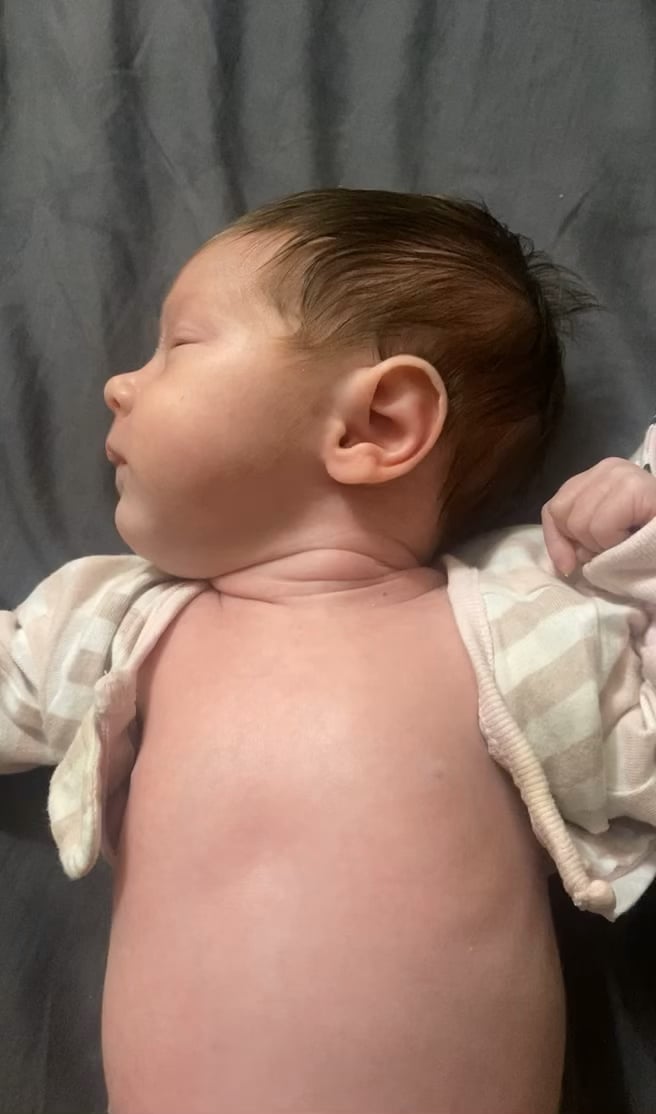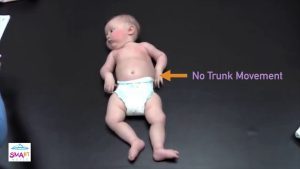Normal baby breathing Vs retractions is smooth and even, while retractions show inward movement of the chest. Retractions indicate respiratory distress.
When it comes to monitoring your baby’s breathing, it’s essential to differentiate between normal patterns and signs of potential problems. Understanding the differences between normal baby breathing and retractions can help parents identify when to seek medical attention. Normal baby breathing is characterized by a steady and rhythmic pattern, with no visible effort or strain.
On the other hand, retractions occur when the baby’s chest sinks in with each breath, indicating that the child is working harder to breathe. Recognizing these distinctions can be crucial in ensuring your baby’s well-being and getting timely medical intervention when needed. By being aware of these signs, parents can provide the necessary care and support for their little ones.
Signs And Symptoms, baby breathing Vs retractions
When it comes to monitoring your baby’s breathing, it’s crucial to be able to distinguish between normal baby breathing and signs of respiratory distress, such as retractions. Understanding the signs and symptoms of both normal and abnormal breathing patterns can help you identify when to seek medical attention for your little one.
Normal Baby Breathing Signs
Normal baby breathing is typically rhythmic, quiet, and unlabored. Here are some signs of normal baby breathing:
- Belly rises and falls with each breath
- No audible sounds while breathing
- Consistent breathing pattern
Retractions Symptoms
Retractions occur when the muscles between the ribs and in the neck pull inward with each breath, indicating that the baby is working harder to breathe. Here are some symptoms of retractions:
- Visible sinking of the skin between the ribs or above the collarbone
- Nostril flaring
- Labored breathing or grunting sounds
Causes
When it comes to understanding the causes of normal baby breathing versus retractions, it’s important to be aware of the differences in these breathing patterns. Normal baby breathing typically involves regular and unlabored breaths, while retractions in baby breathing can indicate an underlying issue that requires attention. Let’s explore the causes of each to gain a better understanding of these respiratory patterns.
Causes Of Normal Baby Breathing
Normal baby breathing is primarily the result of the development and maturation of the respiratory system. During the first few months of life, babies may exhibit irregular breathing patterns, including brief pauses and rapid breathing, as their bodies adjust to the new environment outside the womb. The rhythmic expansion and contraction of the chest and abdomen during breathing are essential for the exchange of oxygen and carbon dioxide, supporting the baby’s overall growth and development.
Causes Of Retractions In Baby Breathing
The causes of retractions in baby breathing can stem from various respiratory issues, including respiratory infections such as bronchiolitis, pneumonia, or croup. Additionally, conditions like asthma, allergies, or foreign object aspiration can lead to retractions as the body struggles to adequately supply oxygen to vital organs. Premature birth, congenital heart defects, or respiratory distress syndrome may also contribute to retractions in baby breathing, necessitating prompt medical evaluation and intervention to address the underlying cause.
Diagnosis
Diagnosis is crucial in distinguishing between normal baby breathing and retractions. Understanding the signs and symptoms is vital for prompt medical attention.
Diagnosing Normal Baby Breathing
- Observe steady and even movements of the chest and abdomen.
- Listen for soft, regular sounds of breathing without any grunting or wheezing.
- Ensure the baby’s skin color remains normal without any bluish tint.
Diagnosing Retractions In Baby Breathing
- Look for visible sinking of the skin between the ribs or above the clavicles.
- Observe the nostrils flaring or the chest pulling in with each breath.
- Listen for any abnormal sounds like grunting or high-pitched wheezing.

Treatment
When comparing normal baby breathing with retractions, it’s important to understand the differences in how a baby breathes. Retractions, which are visible indentations in the chest or abdomen, can indicate respiratory distress and may require medical treatment. Monitoring your baby’s breathing patterns and seeking prompt medical attention if you notice retractions is crucial for ensuring their well-being.
Normal baby breathing usually requires no treatment. However, keeping a close eye on your baby’s breathing pattern is crucial.
Treatment For Normal Baby Breathing
– Ensure baby is in a safe sleeping position. – Avoid exposure to smoke or other irritants. – Monitor breathing regularly for any changes.
Treatment For Retractions In Baby Breathing
– Seek immediate medical attention. – Provide oxygen therapy if necessary. – Consider hospitalization for severe cases.
Prevention
Learn to differentiate between normal baby breathing and retractions to prevent any potential respiratory issues early on. Understanding the subtle signs can help caregivers take proactive measures for a baby’s well-being. Early recognition and action are crucial in ensuring a baby’s healthy development.
When it comes to your baby’s health, it’s always better to be safe than sorry. As a parent, you want to ensure that your little one is breathing normally without any complications. While it’s natural for babies to have occasional breathing issues, it’s essential to know the difference between normal baby breathing and retractions. In this blog post, we will discuss how to prevent both normal baby breathing issues and retractions.
Preventing Normal Baby Breathing Issues
Most of the time, normal baby breathing issues are not a cause for concern. However, there are a few things you can do to prevent them:
- Keep your baby in a smoke-free environment.
- Ensure that your baby is sleeping on their back to prevent Sudden Infant Death Syndrome (SIDS).
- Make sure your baby’s head is not covered with a blanket or any other object while sleeping.
- Keep your baby’s sleeping area free of stuffed toys and other objects that could obstruct their breathing.
- Monitor your baby’s breathing patterns and seek medical attention if you notice any significant changes or irregularities.
Preventing Retractions In Baby Breathing
Retractions occur when there is difficulty in breathing, and the muscles between the ribs and in the neck and abdomen pull in when your baby inhales. Retractions in baby breathing can be a sign of a severe respiratory problem and should be addressed immediately. Here are some ways to prevent retractions in baby breathing:
- Keep your baby away from people with respiratory infections.
- Ensure that your baby is vaccinated against common respiratory illnesses.
- Avoid exposing your baby to smoke or other environmental pollutants.
- Monitor your baby’s breathing patterns and seek medical attention if you notice any retractions or other significant changes in breathing.
- Follow your doctor’s advice regarding the use of any breathing aids or medications.
In conclusion, preventing normal baby breathing issues and retractions in baby breathing is essential for your baby’s health and wellbeing. By following the tips mentioned above, you can ensure that your baby is breathing normally and without any complications. Remember to seek medical attention if you notice any significant changes in your baby’s breathing, as early intervention can prevent more severe respiratory problems.
When To Seek Medical Help
If your baby shows signs of retractions while breathing, such as visible chest sinking, seek immediate medical attention. Normal baby breathing should be smooth and without any visible strain. Retractions indicate possible respiratory distress and require urgent evaluation by a healthcare provider.
Normal Baby Breathing
In newborns, normal breathing is regular and quiet without any signs of struggle.
Retractions in baby breathing are visible signs of difficulty breathing, often indicated by sucking in of the chest or ribs.
Retractions may occur due to various reasons such as infections, obstructions, or respiratory issues.
Persistent retractions are a cause for concern and should prompt immediate medical evaluation. If you notice persistent retractions, flaring nostrils, or grunting sounds, seek medical help urgently.
What Is The Difference Between Normal Breathing And Retractions In Infants?
Normal breathing in infants is rhythmic and even, while retractions occur when the muscles between the ribs and in the neck visibly strain with each breath. Retractions can be a sign of respiratory distress and should be evaluated by a healthcare provider.
How To Tell If Baby Is Retracting?
To tell if a baby is retracting, observe if they are pulling their chest and belly in while breathing.
What Does Retracted Breathing Look Like?
Retracted breathing appears as visible neck muscles and ribs moving inwards during inhalation. It indicates respiratory distress.
How Do I Know If My Baby Is Not Breathing Normally?
If your baby is not breathing normally, look for irregular chest movements, gasping, or bluish skin. Listen for abnormal sounds or lack of breathing. Seek immediate medical help if you suspect any breathing difficulties in your baby.
Conclusion
In understanding normal baby breathing vs. Retractions, it’s crucial to observe signs carefully. Recognizing subtle differences can aid in timely intervention and peace of mind for parents. Always consult with a healthcare professional for any concerns regarding your baby’s breathing patterns.
Stay informed and attentive to your little one’s well-being. “Normal baby breathing Vs retractions”





